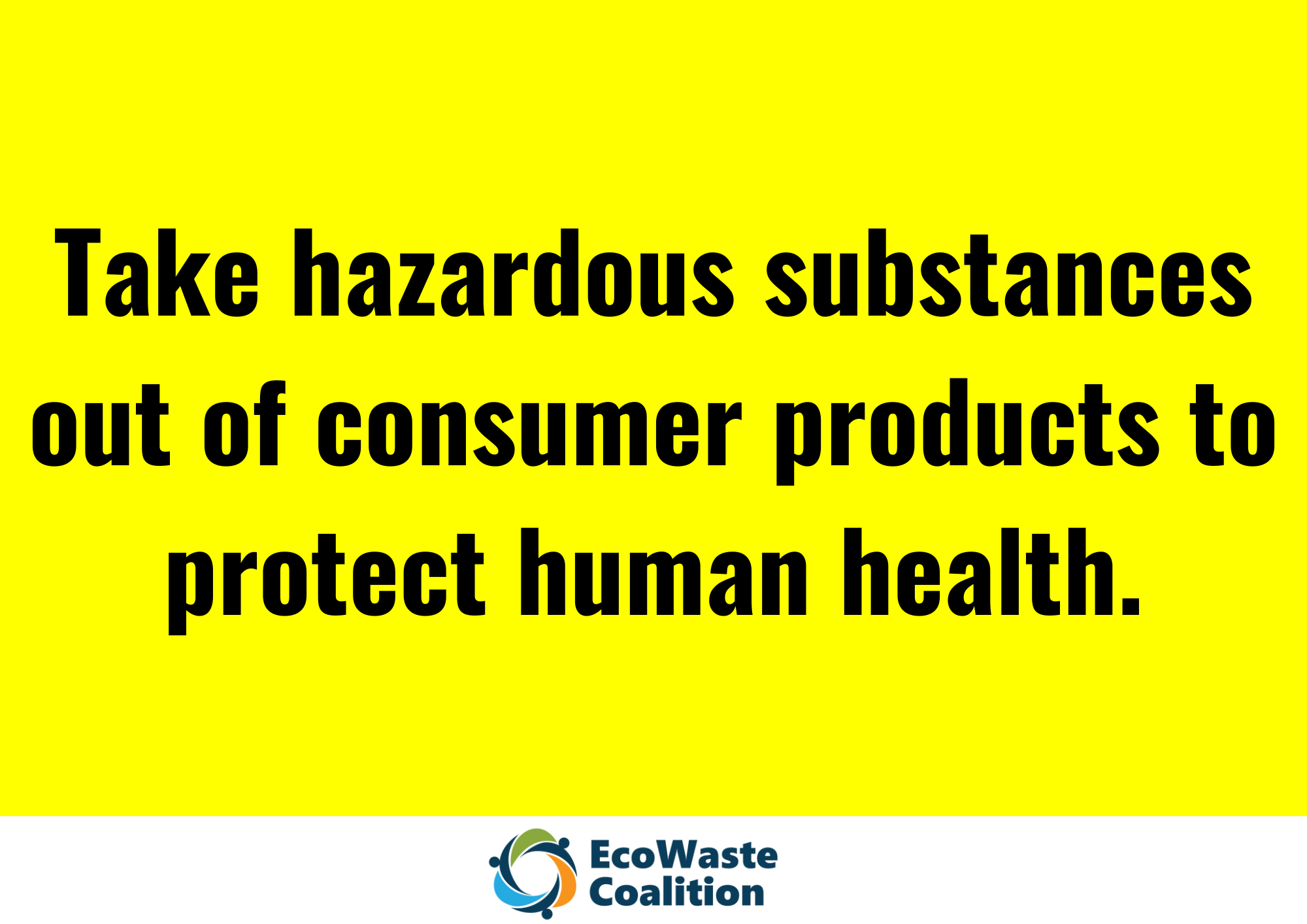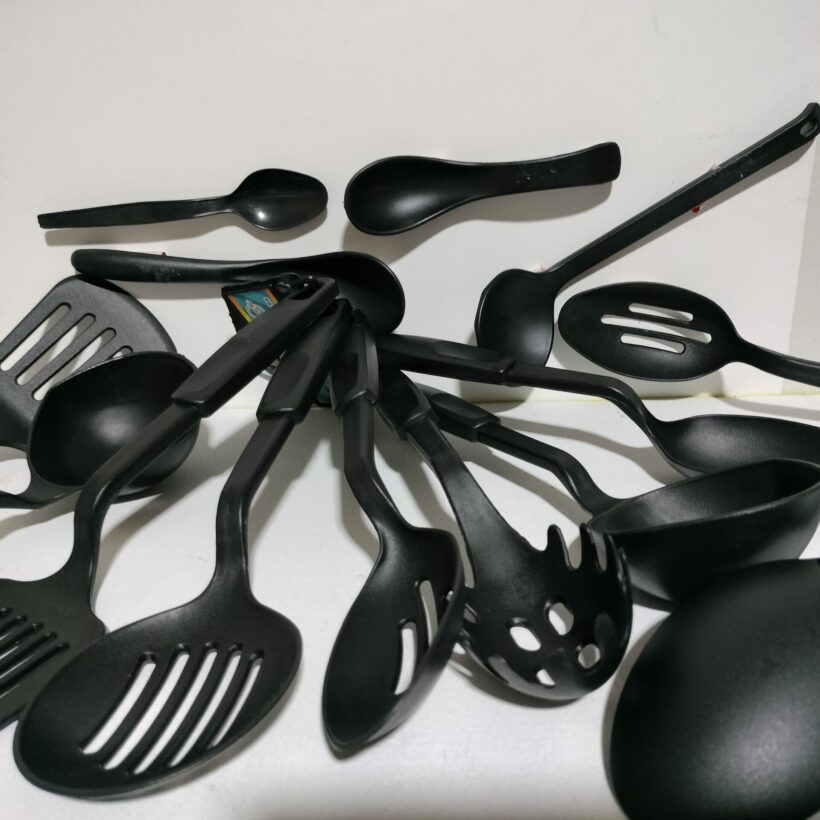26 February 2023, Quezon City. The toxics watchdog group EcoWaste Coalition has raised concern over the detection of bromine in some black plastic cutlery and kitchen utensils being sold in retail stores in Metro Manila.
“The detection of bromine in some cutlery and kitchen utensils being sold locally is a red flag,” said Aileen Lucero, National Coordinator, EcoWaste Coalition, “as this substance is a component of toxic brominated flame retardant (BFR) chemicals linked to a number of adverse health effects such as interference with the body’s normal hormone functions.”

“The recycling of toxic flame retardants into consumer products raises an alarm that should be translated into control actions in the Philippines and worldwide, including defining thresholds for Persistent Organic Pollutants (POPs) waste (or the so-called low POPs content levels or LPCLs) and strategies for the circular economy, including the crucial interface of chemicals-products-wastes legislation,” commented Jitka Strakova, Global Researcher, International Pollutants Elimination Network (IPEN).
BFRs are commonly used in the plastic casings of consumer electronics such as computers, televisions, and mobile phones, as well as in textiles, vehicles, and polyurethane foam in mattresses and upholstered furniture to reduce fire-related injury and damage. Recent studies conducted by Arnika and IPEN have also found them in black plastic children’s toys, hair accessories and kitchen utensils, indicating the recycling of BFR-containing e-waste into consumer products.
Exposure to BFRs such as hexabromocyclododecane (HBCD) and polybrominated diphenyl ethers (PBDEs) is associated with a variety of health problems, including the disruption of hormone functions, obesity, cancers, cardiovascular, reproductive health, and neurological disorders, which can lead to impaired cognitive development, reduced intelligence, decreased motor skills, increased impulsivity, and diminished attention. Humans are exposed to BFRs via air inhalation, diet or dust ingestion, and skin contact.
In test buys conducted from February 19 to 21, the EcoWaste Coalition collected 45 assorted cutlery and kitchen utensils sold in retail stores in Caloocan, Manila, and Quezon Cities. Items made of black plastic were chosen as other studies have found BFRs in such products.
Among the items purchased and checked for bromine content using an X-Ray Fluorescence (XRF) analyzer were black plastic ladles, skimmers, spaghetti servers, spatulas, turners, spoons, and others.
Based on the XRF screening results, samples of big and small reusable black plastic spoons had 27,170 and 2,225 parts per million (ppm) of bromine, respectively, while a small soup ladle had 1,758 ppm. A disposable black plastic spoon contained 139 ppm of bromine.
Also, 10 black plastic kitchen utensils were found to contain 119 to 864 ppm of bromine, including a slotted turner (with 864 ppm), ladle (482 ppm), and a soup ladle (236 ppm).
In most cases, bromine was detected along with antimony (a component of antimony trioxide which is a common flame retardant synergist) as well as lead (a heavy metal additive or a contaminant).
“This is not the first time that we’ve detected bromine or BFRs in black plastic consumer products, especially children’s toys,” noted Lucero.
For example, the group in 2022 found eight Halloween toys with bromine content up to 6,680 ppm as per XRF screening. It also detected 7,760 ppm of bromine in one toy gun during its toy sampling last Christmas. In 2020, the group found 13,300 ppm of bromine in the black plastic component of a toy guitar.
In 2016, four samples of Rubik’s Cube-like toys sent by the EcoWaste Coalition to the Czech Republic for a global study organized by Arnika and IPEN involving 47 samples from 16 countries were found to contain significant levels of PBDEs (particularly OctaBDE and/or DecaBDE).
One “made in China” product submitted by the group tested with the highest concentration of OctaBDE among the 47 samples. Prior to shipping the samples, the group screened the items for bromine with the aid of an XRF device.
“Toxic flame retardant chemicals should not be present in consumer and household products, including toys and food contact materials, due to their hazardous properties and adverse effects to human health and the environment,” the EcoWaste Coalition asserted.
References:
http://www.ipen.org/documents/health-and-environmental-hazards-pbdes-and-other-bfrs
http://ipen.org/documents/toxic-toy-or-toxic-waste-recycling-pops-new-products






